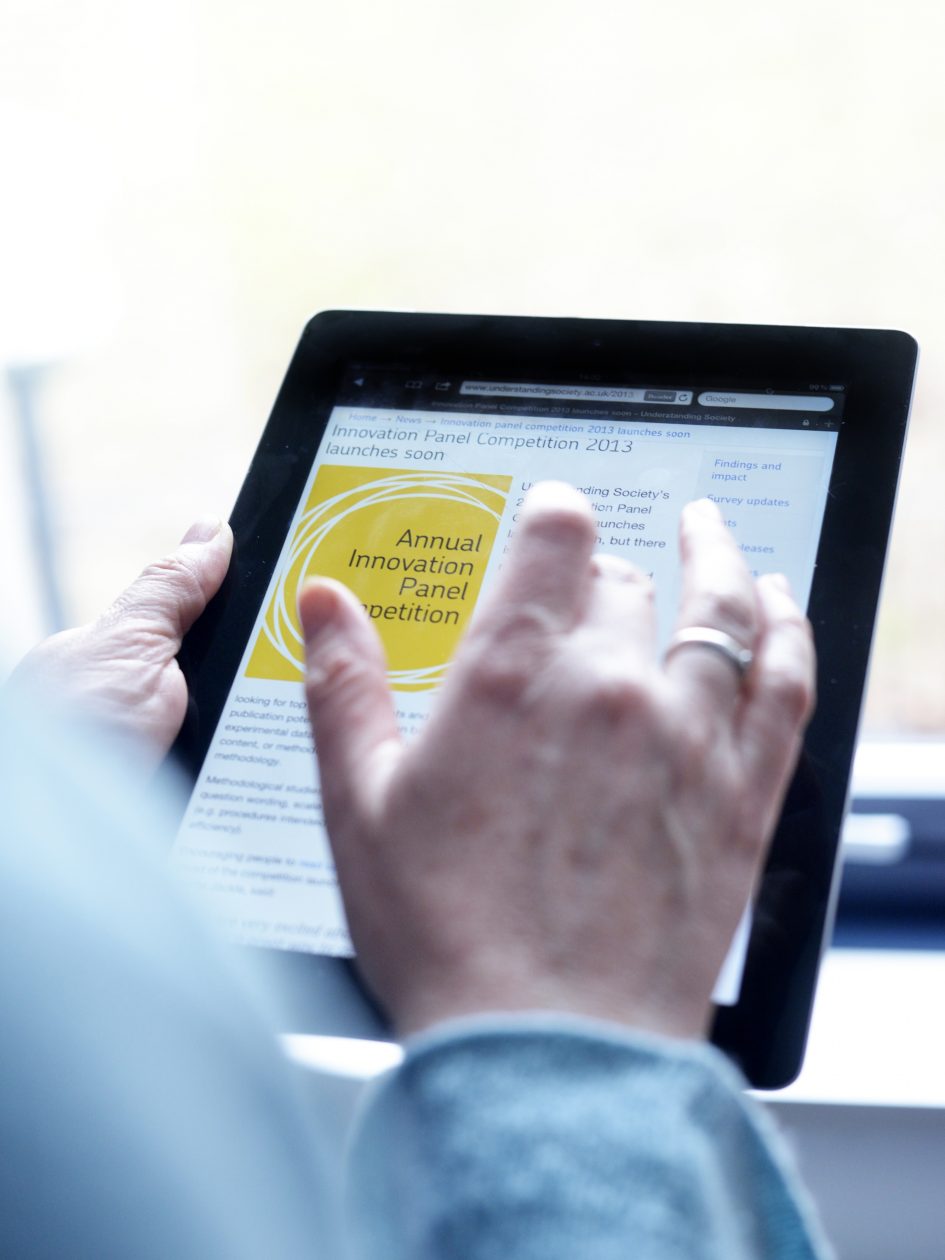Methodological innovations in data collection in longitudinal studies
Outputs
The outputs from this project are now available on the CLOSER website.
Use of mixed modes for data collection in longitudinal surveys:
- Workshop programme
- Blog post: “Why mixed modes are here to stay”
- Jäckle, Gaia, Benzeval (2017): Mixing modes and measurement methods in longitudinal studies. CLOSER Resource Report. London: CLOSER.
Use of new technologies and novel methods to capture health data in longitudinal studies:
- Workshop programme and slides
- Blog post: “Greater use of new technology to collect data can revolutionise longitudinal studies”
- Stone, Skinner (2017): New technology and novel methods for capturing health-related data in longitudinal and cohort studies. CLOSER Resource Report. London: CLOSER.
Use of new technologies to measure socio-economic and environmental concepts in longitudinal studies:
- Workshop programme and slides
- Blog post: “Collecting data with new technologies – valuable for research, or are we just collecting data for the sake of it?”
- Jäckle, Gaia, Benzeval (2018): The use of new technologies to measure socio-economic and environmental concepts in longitudinal studies. CLOSER Resource Report. London: CLOSER.
Background
Across the world longitudinal studies are facing falling response rates, at the same time cost imperatives are bringing into question the feasibility of large scale regular face-to-face data collection. While, the rapid development of communications technology and associated cultural changes is assumed to mean that study participants will increasingly expect to be able to answer surveys when and how it suits them. All of these factors are driving longitudinal studies to combine different modes of data collection both to increase response and to reduce costs. Mixing modes of data collection either across individuals at one point in time or within individuals over time, presents longitudinal researchers with a range of methodological challenges in both data collection and analysis. Within CLOSER (Cohort & Longitudinal Studies Enhancement Resources), and beyond, studies are investigating different aspects of the implications of mixed mode data collection, and giving data users varying degrees of support and advice about issues that should be of concern.
At the same time, new technologies are increasingly being used in market research and more recently social research to improve the breadth, quality and ease of different kinds of data collection. New technologies that can be used by researchers to collect data include: smartphones, gamification of surveys, gadgets related to the ‘quantified self’ movement and internet of things. Researchers can also link to external technologies to draw in new kinds of data such as linking to social media, storecards and barcoding. Finally, new technologies mean the way samples and data are processed can reduce the complexity of data collection, for example, using hair samples to obtain measures of cortisol or dried blot spots for metabolomics.
Taken together, new technologies mean new kinds of data can be drawn into studies to measure key variables more accurately, or perhaps in a less burdensome way, or to respond to new and emerging research needs. In the future, the most effective way of collecting data will require a more flexible and heterogeneous approach with different topics requiring different modes and frequencies to achieve the most accurate and consistent data. But these exciting opportunities also present significant challenges for both data collection and analytical methods. For example, the passive measurement of health and other behaviours enabled by new digital technologies offers the possibility of capturing data less susceptible to the biases usually associated with measurement but creates new sources of bias in terms of who might participate and how well they engage. In addition, the intensive measures of behaviours these technologies can provide (frequent sampling over extended periods, ambulatory measurement in the wild, sensors closely coupled to individuals) bring the promise of far richer phenotyping of studies, but very different kinds of data to those traditionally collected in surveys. Advances like these mean that new technologies will change the nature of the data that can be measured in longitudinal studies, and our reviews and workshops have demonstrated how this can be achieved and some of the key issues that need to be addressed to do so.
Team members
Professor Michaela Benzeval
Director, Understanding Society - ISER - University of Essex
Professor Kate Tilling
Professor of Medical Statistics - University of Bristol
Dr Andy Skinner
Senior Research Associate, School of Experimental Psychology - University of Bristol
Dr Alessandra Gaia
Research Officer - ISER - University of Essex
Professor Annette Jäckle
Professor of Survey Methodology - ISER - University of Essex

Start date
01 Jan 2016
End date
31 Dec 2016
Funder
CLOSER Innovation Fund